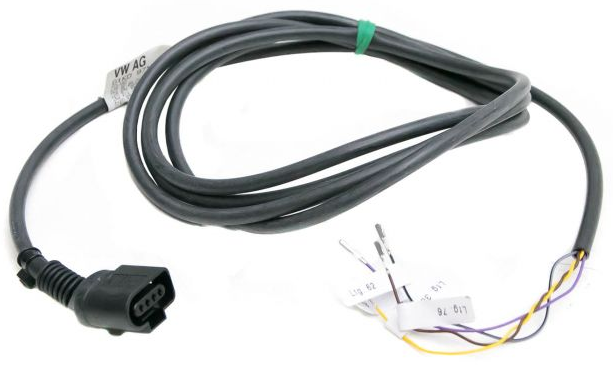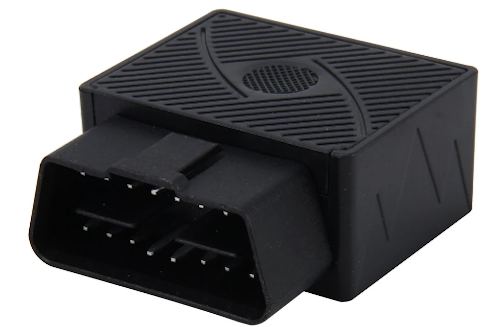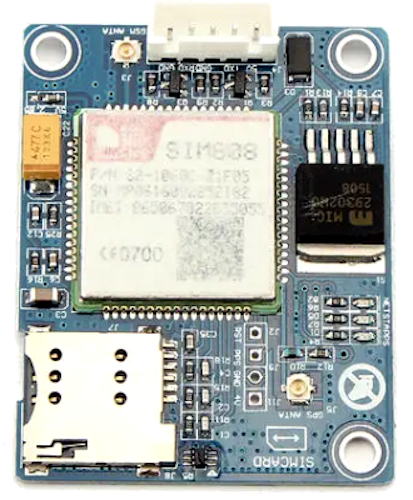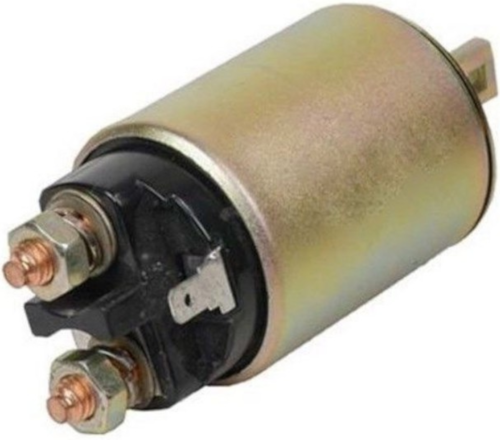Common OBD-II Problems
OBD-II has now been in our faces for a "Quarter Century" and even though it works fairly efficiently to control the hydro-carbon emissions in post '96 vehicles to some degree, it isn't as effective as some people would've liked, in terms of its diagnostic accuracy or as transparent and simplistic in its use to aid the layman. On the flip side, many people with several mechanics among them completely abhors OBD-II and sees it more as a hindrance that a help and even add that they prefer cars not to have OBD-II. Since its inception, OBD-II has stymied mechanics globally, especially when the OBD-II system shuts down the engine and turns on the EPC Light or Check Engine Light. And today, some 25 years later most car owners and mechanics still suffer fits effects yet endure the wrath of OBD-II. However, regardless of what we as lay people say, OBD-II is here to stay and we cannot wish it or will it away.
Personally I think OBD-II is a great in all aspects and incarnations however it has its drawbacks. OBD-II does place car owners at a huge disadvantage and at risk when it fails. Purely because the problems are not evident but rather masked by the mysteries of electronics technology. This very often leaves them stranded and in a dangerous situations when stuck in the middle of nowhere. With the result that even the DIY car owners cannot do any repair work themselves, but have to resort to phoning a salvage company to come load their vehicle onto a rollback. Unless of course they have previously invested in a OBD-II scanner and is able to check for DTC error codes. But as the saying goes, "most people only lock the stable after the horse has bolted".
Another drawback of OBD-II is that since car owners in general do not own diagnostic scanners; so they have to rely on some mechanic workshop or mechanical to tell them what problems they've encountered with their vehicle but only once its repaired. Considering most mechanics / repair shops repair OBD-II errors by substituting parts until the cause of the problem is solved. Merely because they don't even understand the workings of OBD-II well enough to pinpoint problems with any great success. For most of us, this type of hit-&-miss approach comes as an un-bugeted expense, which most car owners can ill-afford especially after having to pay the exorbitant rollback cost.
I believe there are thousands more vehicle owners today, interested in their own vehicle's maintenance and there are even more inclined towards DIY repairs than ever before because of ODB-II. Their motivating factor being the high cost of automotive repairs vs the low cost of ODB-II diagnostic scanners. Albeit that the lower cost scanners bordering on cheap doesn't do such a fantastic diagnostic scan as their more expensive counter parts.
NEW GENERATION CARS
Hopefully, the next generation of automobiles will be released with onboard diagnostic scanners incorporated directly into the vehicle's infotainment system. Seeing that these fancy units are comprised of several discrete devices built into the same platform. It's quite common for the average touch screen infotainment systems to have features ranging from Built-in Bluetooth to Built-in WIFI which supports WiFi hot-spot broadcasting. Integrated phone connectivity for calls. Some even have rear view camera support.Others have fully fledged full-format 1080P video decoding, and USB functionality with multi-format audio and multi-band radio, coupled to dedicated dual voice-coil subwoofer and surround sound speakers. Not to mention Internet APP download capability. Some include mirror and link for both Android and IOS Phones and a Global Positioning System (GPS) for navigation. All thanks to the magic of powerful multi-core processors and microprocessor embedded systems.
I'd say adding an OBD-II scanner in place of one of these gadgets would be more beneficial
So, throwing in a pretty decent quality OBD-II scanner into such a menagerie of tech wouldn't be such a biggie for car manufacturers and the cost wouldn't be prohibitively expensive either. But since we not at that point in automotive evolution as yet, most DIY car owners have to rely on the handheld / smartphone diagnostics to scan their cars.
Be that as it may. Very fortunately there are some common fault lists that would prevent you from having to go buy an expensive OBD-II scanner or go through the agony and trauma of having your car fixed by trial and error. Sharing common automotive problems for the benefit of other, who are bound to experience the exact same problems in the very near future is a godsend. Same model cars tend to have the same problems as others but invariable and inevitably those components will fail because obsolescence was part of its initial design. The same components used different model cars tend to fail in the same way and cause the same problems.
We've found that the most common OBD-II problems are associated with misfiring engine cylinders, problematic exhaust Gate Reticulation system (EGR), Oxygen Sensor (O2), Electrical Harnesses and fault Catalytic Converters. Many car owners are decating their diesel models, claiming better performance. But since OBD-II was explicitly introduced to control and reduce carbon emissions, removing it is not such a great idea.
COMMON FAULTS
Erratically idling, or misfiring of bucking or car goes into limp mode or starts and cuts out all result any one or more of the following error codes:-
P0105 - Manifold Absolute Pressure / Barometric Pressure Voltage supply
P0106 - Manifold Absolute Pressure / Barometric Pressure out of range
P0107 - Manifold Absolute Pressure / Barometric Pressure Low Input
P0108 - Manifold Absolute Pressure / Barometric Pressure High Input
P0234 - Turbocharger Overboost Condition Control limit exceeded
P0235 - Turbocharger Boost Sensor (A) Control circuit limit not reached
P0236 - Turbocharger Boost Sensor (A) circuit out of range
P0237 - Turbocharger Boost Sensor (A) circuit Low Input
P0238 - Turbocharger Boost Sensor (A) circuit High Input
P0243 - Turbocharger Wastegate Solenoid (A) Open/Short Circuit to Ground
P0245 - Turbocharger Wastegate Solenoid (A) Low Input/Short to ground
P0246 - Turbocharger Wastegate Solenoid (A) High Input/Short to B+
P1154 - Manifold Switch Over Malfunction
P1155 - Manifold Absolute Pressure Sensor Circuit Short to B+
P1156 - Manifold Absolute Pressure Sensor Circuit Open/Short to Ground
P1157 - Manifold Absolute Pressure Sensor Circuit Power Supply Malfunction
P1158 - Manifold Absolute Pressure Sensor Circuit out of range
P1400 - EGR Valve Circuit Electrical Malfunction
P1401 - EGR Valve Circuit Short to Ground
P1402 - EGR Valve Circuit Short to B+
P1403 - EGR Flow Deviation
P1404 - EGR Flow Basic Setting not carried out
P1406 - EGR Temperature Sensor Performance range
P1407 - EGR Temperature Sensor Signal too Low
P1408 - EGR Temperature Sensor Signal too High
P1511 - Intake Manifold Changeover Valve - Electrical circuit malfunction
P1512 - Intake Manifold Changeover Valve Short circuit to B+
P1513 - Intake Manifold Changeover Valve2 Short circuit to B+
P1514 - Intake Manifold Changeover Valve2 Short circuit to ground
P1515 - Intake Manifold Changeover Valve Short circuit to ground
P1516 - Intake Manifold Changeover Valve - Open circuit
P1520 - Intake Manifold Changeover Valve2 - Open circuit
P1521 - Intake Manifold Changeover Valve2 electrical circuit malfunction
P1553 - Barometric/manifold pressure signal ratio out of range
Polo Highline 1.9 TDI (9N) 2005
16621 - Manifold Pressure / Boost Sensor (G31): Signal too Low
P0237 - 000 - -
Audi A5 (8T0) 2012
4166 - Manifold Pressure / Boost Sensor (G31)
P0238 00 [039] - Signal too High
Audi TT 1.8L R4/5VT
16622 - Manifold Pressure / Boost Sensor (G31): Signal too High
0238 - 35-00 -
000568 - Manifold Pressure / Boost Sensor (G31): Signal too High
P0238 - 001 - Upper Limit Exceeded - MIL ON
Passat 2.0T R4/4V TFSI 2006
000568 - Manifold Pressure / Boost Sensor (G31): Signal too High
P0238 - 001 - Upper Limit Exceeded - MIL ON
VW Touran 1.9 TDI
P0236 - Manifold Pressure/Boost Sensor (G31) - Range/Performance Problem/Implausible Signal
Malfunction Indicator Lamp (MIL)(K83) active.
VW Golf 7 1.6TDI
16622 (P0238 ) - Manifold Pressure/Boost Sensor (G31): Signal too High
16618 (P0234) - Boost Pressure Regulation: Limit Exceeded (Overboost Condition)
Passat 2.0T R4/4V TFSI 2006
004759 - Pressure Drop between Turbo and Throttle Valve
P1297 - 001 - Upper Limit Exceeded
This MAP Manifold Pressure Sensor aka Boost Sensor aka Thrust sensor aka G31 is just a thermistor. Essentially a resistor of a special kind, with the ability to change its resistance subject to its surrounding temperature, hence the term thermistor is just a word combination of "thermal" and "resistor". However G31 sensor may not be fault but rather the wiring harness. Due to the constant engine heat, the harness wiring gets hard and becomes brittle resulting in poor contact, short and open circuits.
FYI - Thermistors essentially come in two varieties, viz NTC (negative temperature coefficient) and a PTC (positive temperature coefficient). You can quite simply use an ohmmeter to measure the resistance of the thermistor. Then by bringing a hot soldering iron tip close to the thermistor, its resistance would change in response to the soldering iron's radiated heat. When the resistance increases its a PTC and an NTC when the resistance decreases. Much like discrete component resistors that are colour coded, thermistors leads are also colour coded which identifies the temperature range they operate at.
CATALYTIC CONVERTER
Catalytic Converter have become a hot topic of late. Thieves are stealing Catalytic converters from parked cars at night. However the Polo Highline 1.9 TDI is known to be troublesome. The main reason for this being, use of poor quality diesel (500ppm as opposed to 50ppm or even 5ppm) and irregular oil changes which caused soot build-up to block the performance of the catalytic converter, which in turn may lead to turbo failure. So its fair to say that it's not uncommon to remove/replace blocked catalytic converters to prolong the life of the turbo itself.
However if it's not the Catalytic converter itself causing the above error, it very possibly not the sensor either even though the diagnostic software may indicate that. I'd say rather check, repair or replace the wiring harness to the Boost Pressure Sensor (G31) and also check wiring to the Intake Air Temperature Sensor (G42). See my previous blog post https://volkswagen-polo-highline.blogspot.com/2015/03/wiring-harness-issues.html
The diagnostic scanners may also thow the following errors in conjunction with the error above, which could be caused by a leak in Air Intake and or Exhaust
16490 - Manifold / Barometric Pressure Sensor (G71) / (F96): Implausible Signal
P0106 - 35-00 - -
18000 - Altitude Sensor / Boost Pressure Sensor: Implausible Correlation
P1592 - 000 - -
Diesel engines are quite different from petrol engines in the sense that the diesel engine is not variable in speed or power by controlling the air entering the engine as we do with the throttle body in petrol styled engines. Feedback from Catalytic converter in petrol engines are also used to adjust the short term and long term fuel trim. Implying that petrol cars also have turbo boost errors due to the cat and intake and exhaust sensors.
16485 / P0101 Mass Air Flow Sensor (MAF) (G70) = Circuit Signal Implausible (out of range)
16497 / P0113 Intake Air Temperature Sensor-1 (G42) = Signal too High
16515 / P0131 O2 (Lambda) sensor low voltage = Bank-1 Low Voltage
16584 / P0200 Injector circuit = Injector Circuit electrical fault
16620 / P0236 Turbo / Manifold Pressure Boost Sensor (G31) = Signal Implausible (out of range)
16622 / P0238 Turbo / Manifold Pressure Boost Sensor (G31) = Signal too High
16683 / P0299 Turbo Boost Pressure Reg = Control Range not reached (underboost) /mechanical fault
16785 / P0401 Exhaust Gas Recirculation (EGR) = Insufficient Flow (blocked)
17055 / P0671 Glow Plug/Heater Cylinder 1 (Q10) electrical fault, open circuit
17958 / P1550 code = Charge Pressure Control Deviation
Check for air leaks on both intake or exhaust side
Turbocharger - check for whining engine and exhaust smoke
Charge Air Pressure Sensor faulty - check connection to one of the the intercooler pipes
Wastegate Regulator N75 Valve faulty - Check one of the 3 thin hoses for leaks
18534 / P2102 Throttle Actuator Control Motor = Signal too Low, check voltage to accelerator pedal
18675 / P2243 O2 Sensor Reference Voltage Bank 1, open circuit
___________________________________________________________________
volkswagen-polo-highline, volkswagen polo highline, polo, volkswagen, highline, VW polo, vw volkswagen, limp mode, Audi limp mode, VW limp mode, volkswagen limp mode, limp home mode,
limp-home mode, epc warning lights, warning epc light, warning epc lights, light EPC warning,
EPC fault light, fault lights EPC, what does epc warning light mean, what does epc light mean on seat ibiza, what does epc light mean on vw polo, what does epc light mean on skoda fabia, what does epc light mean on audi, what does epc light mean on audi tt, what does epc light mean on a golf,
what does the epc light mean on a jetta, what does the epc light mean on a vw passat, epc light, dtc code, epc warning light audi, epc warning light on vw polo, epc in a car, what does epc mean, epc warning lights, warning epc light, warning epc lights, light EPC warning, EPC fault light,
fault lights EPC, epc warning light vw, epc warning light, epc warning light vw polo,epc warning light vw polo loses power, epc warning light vw passat,









